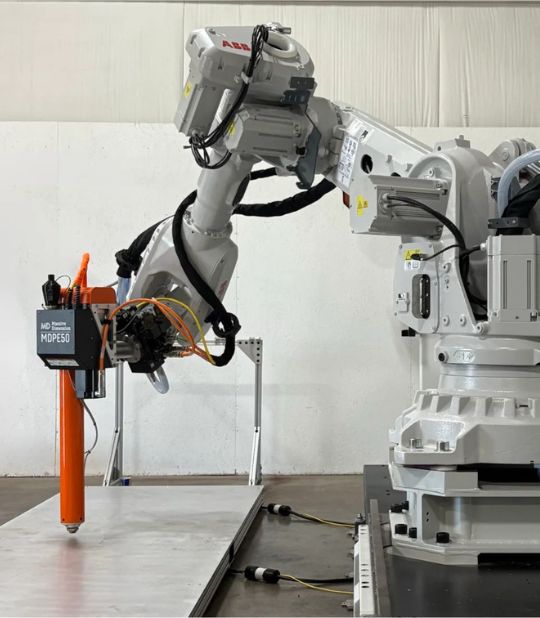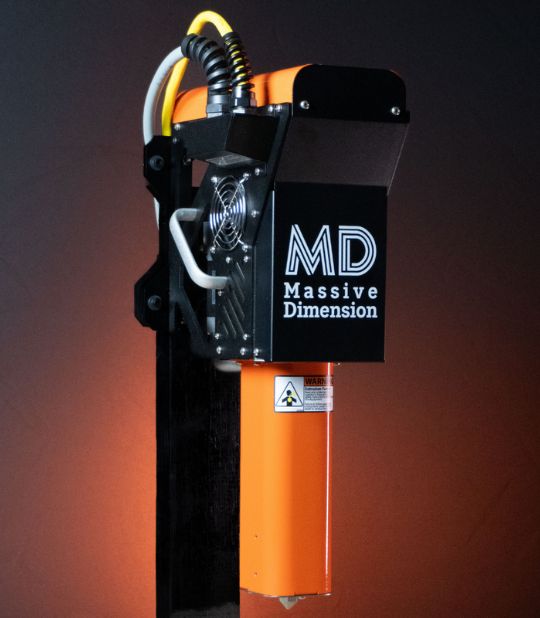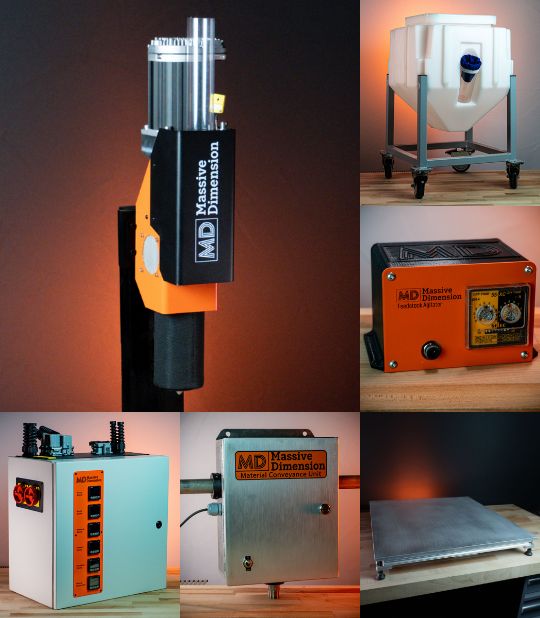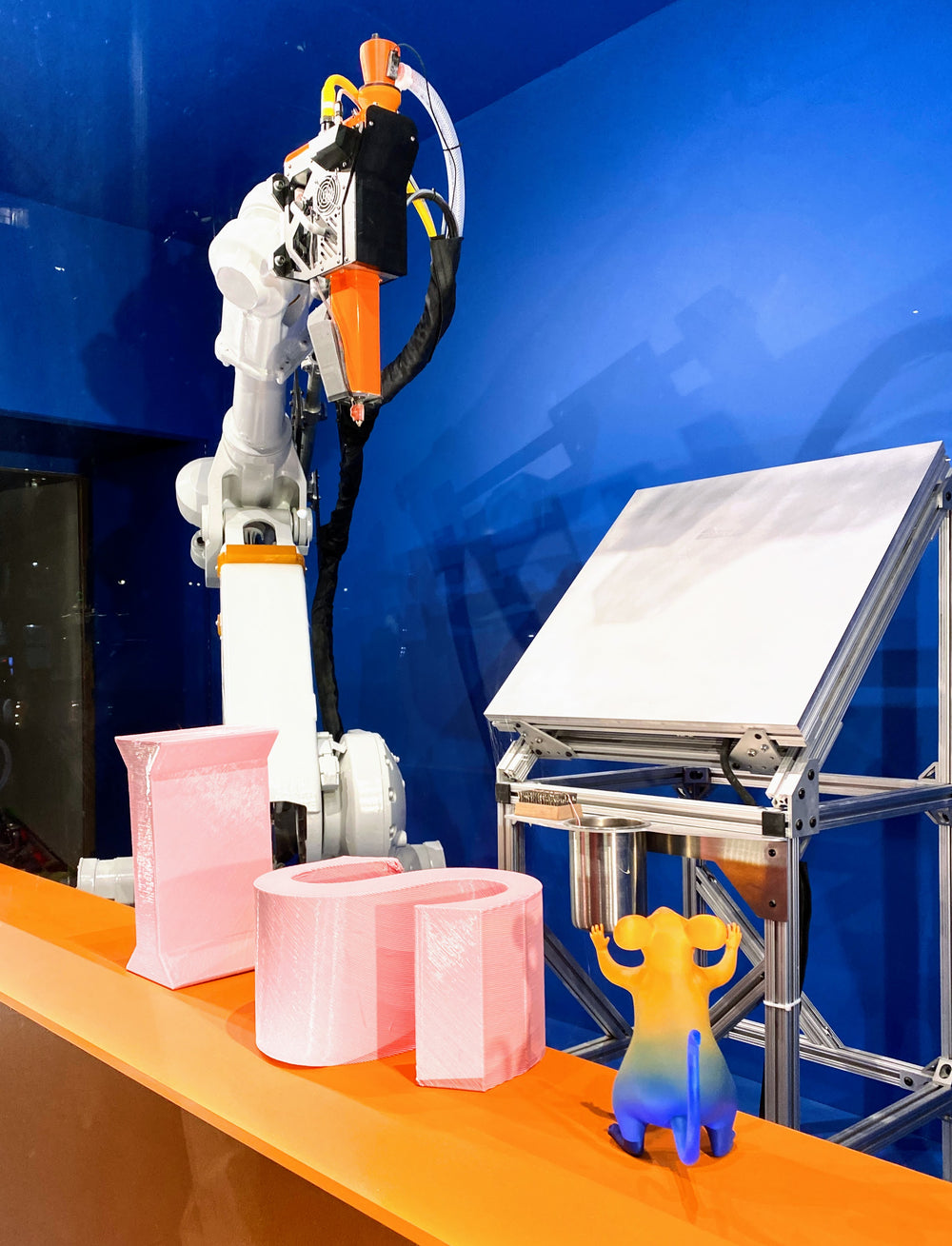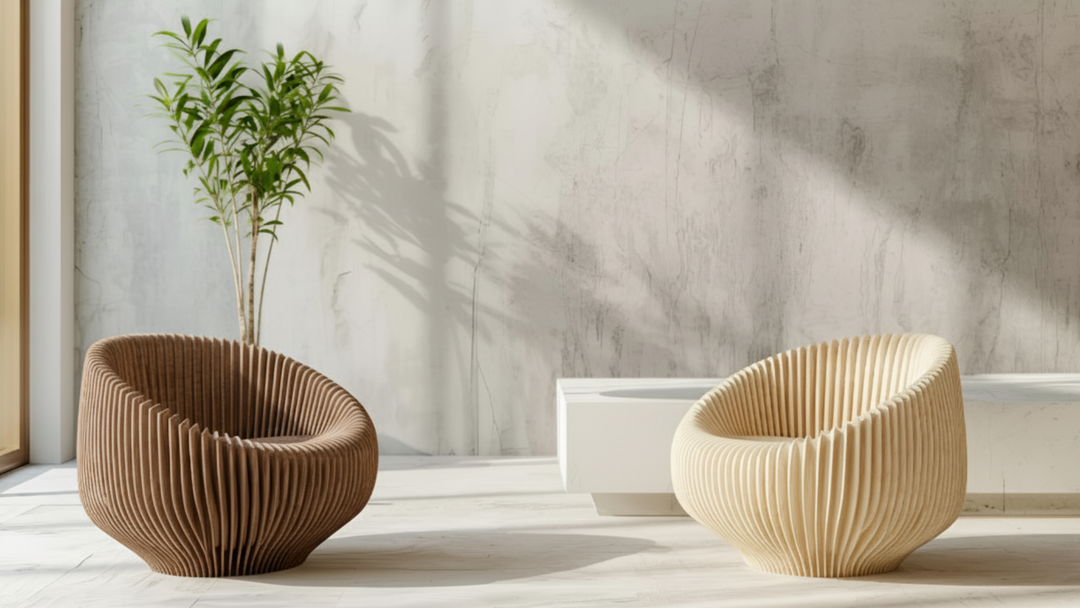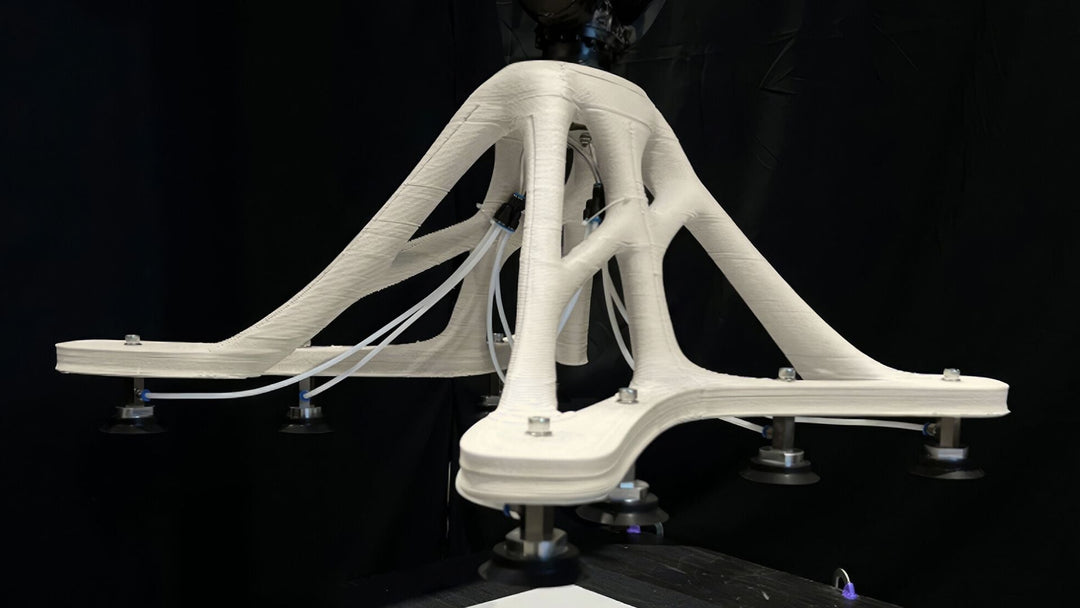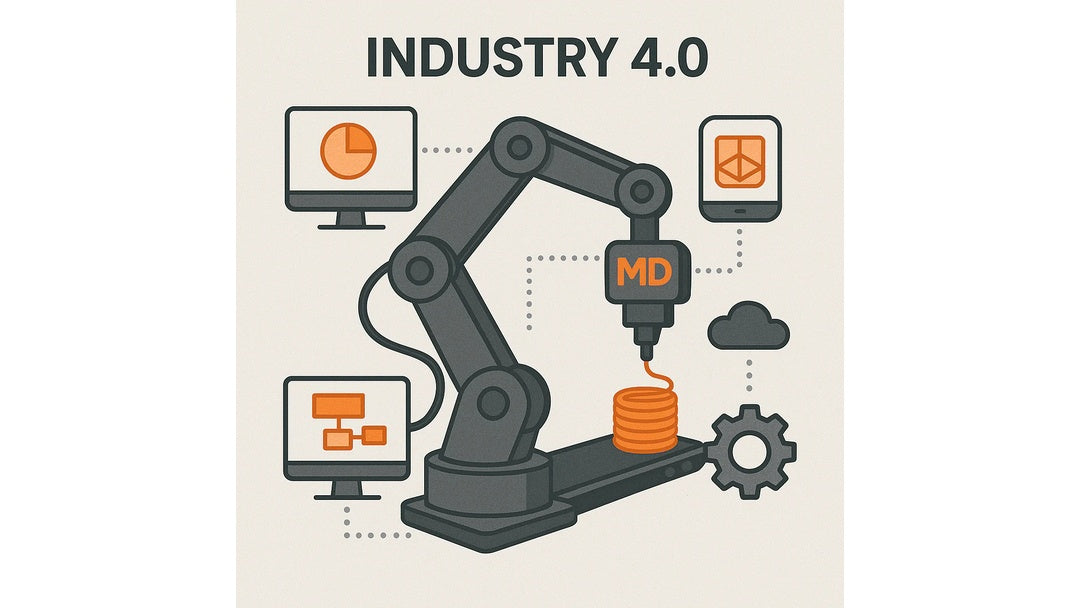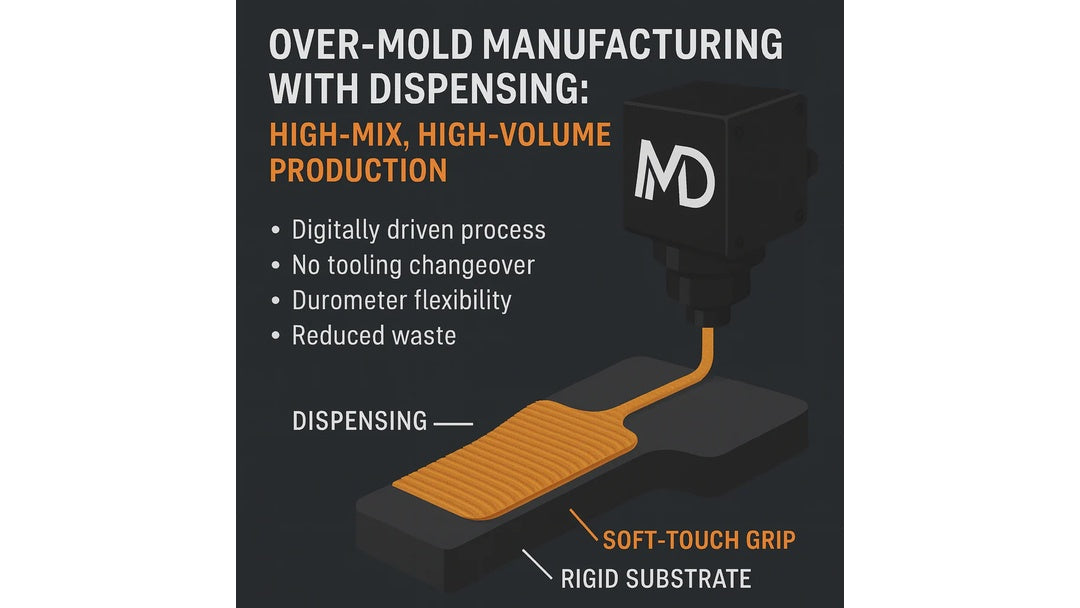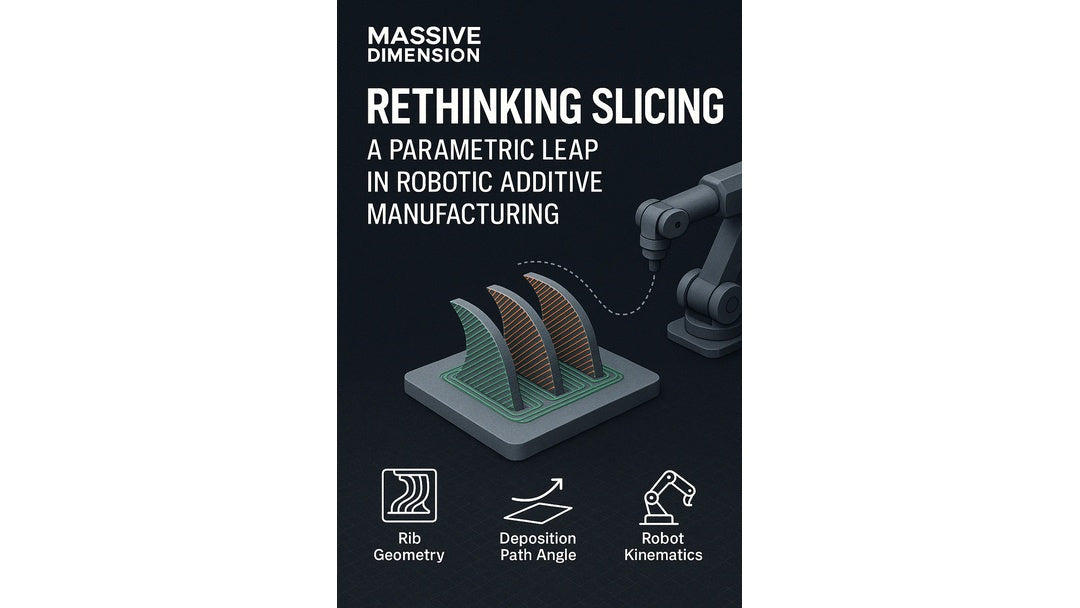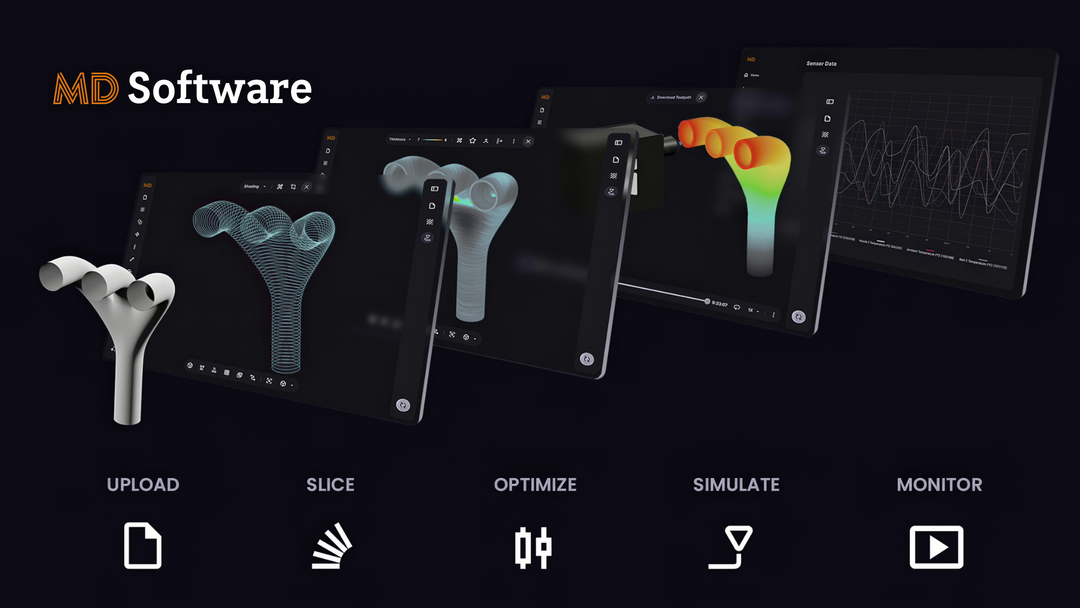10 Steps to Launch Robotic Additive Manufacturing in Your Facility
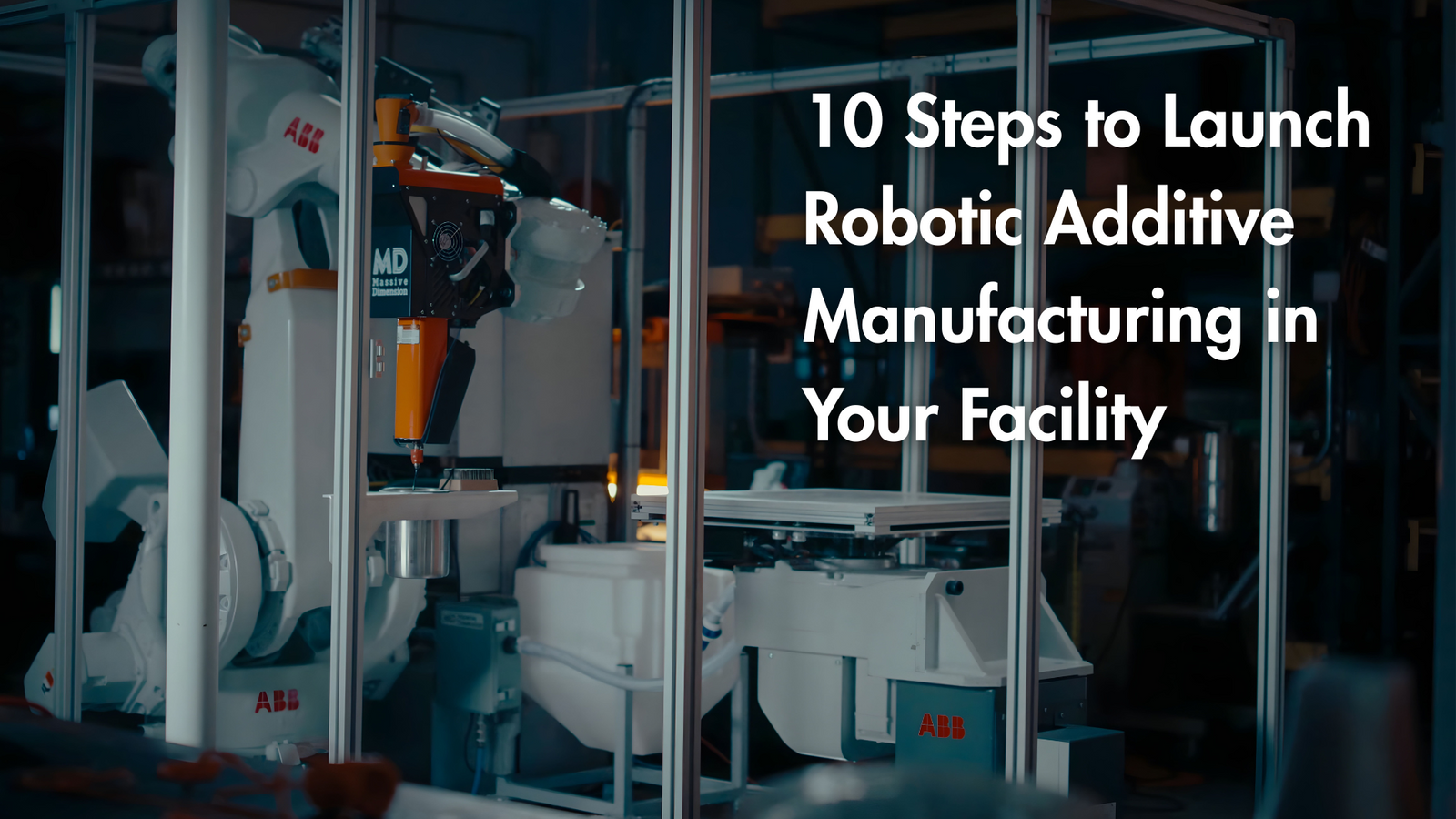
As demand for faster, more flexible, and cost-efficient production grows, manufacturers are turning to 3D printing solutions to help grow their business and streamline processes. By combining industrial robotic arms with pellet extruding 3D printers, a new approach to large format 3D printing enables custom production of large format parts and geometrically complex, tools, and structures—on demand.
Whether you are an industrial engineer, designer, educator, automation specialist, or just curious about exploring robotic additive manufacturing for the first time, here are 10 essential considerations to guide your adoption of this powerful technology.
1. Define Your Application and Objectives
Before investing in a robotic 3D printing system, it’s essential to start with a clear understanding of what you’re trying to achieve. Ask yourself: What specific challenges are we trying to solve, and what’s the long-term impact we want to make on our manufacturing process?
For many engineering and automation teams, the motivation goes beyond adopting a new technology — it’s about solving problems that traditional fabrication methods can’t. Whether it's reducing the cost and lead time for large tooling, unlocking design flexibility, or enabling small-batch customization, robotic 3D printing solutions can transform how you approach production.
With a robotic arm and a pellet extruder, you gain the ability to build large-format parts using affordable, industrial-grade materials. The process supports complex geometries and functional designs that are difficult or impossible to produce with subtractive methods.
Here are just a few of the applications where large format 3D printing delivers immediate value:
-
Large molds and tooling for composite layups or casting
-
Custom jigs and fixtures that accelerate assembly and inspection
-
Architectural elements and prototypes requiring scale and design freedom
-
End-use parts are produced directly from digital files without expensive retooling
By taking time to define your goals up front—whether they’re cost reduction, faster iteration cycles, or increased design complexity—you’ll be better positioned to configure a system that aligns with your needs and delivers long-term value.
2. Select the Right Materials for Your Application
Once you’ve identified what you want to build, the next critical decision is what materials you’ll use to build it. Material selection influences everything — from structural performance and surface finish to printability, cost, and overall process efficiency.
For manufacturers new to additive, this step can feel overwhelming. But with pellet extruder 3D printers, you gain access to a wide variety of thermoplastics in bulk pellet form — many of which are already familiar from traditional molding or machining workflows. Better yet, pellets offer greater flexibility at significantly lower cost than filament-based materials.
Start by asking: What properties does my application require? You might need a high-temperature polymer for aerospace tooling, a stiff composite for structural parts, or an easy-to-print plastic for prototyping. Each material brings its own benefits and tradeoffs.
Here are some of the most common materials used in large format 3D printing today:
-
ABS – A versatile, impact-resistant material used for tooling and functional parts
-
PLA – Easy to print and ideal for low-cost prototypes or architectural models
-
Polycarbonate (PC) – High heat resistance and mechanical strength
-
Nylon and PA6-CF – Strong, lightweight, and available with carbon fiber reinforcement
-
Recycled or bio-based blends – Sustainable options for environmentally conscious workflows
Pellet-based systems also make it easier to experiment with blends or recycled content, which can further reduce material costs or support circular manufacturing initiatives.
By aligning material selection with your performance goals, environmental considerations, and cost targets, you ensure your robotic 3D printing setup is built on a strong foundation — one that’s as practical as it is innovative.
3. Understand the Capabilities of the Robotic Arm
Once your application and material needs are defined, the next step is selecting the right robotic arm — the motion platform that brings the entire system to life. Your robotic arm isn’t just a support tool; it’s a critical component that determines your part size, geometric complexity, and production flexibility.
The choice of arm should be guided by a clear understanding of your goals. Ask yourself: How big are the parts we need to print? How complex are the shapes? Do we need multi-axis movement for surfaces that can’t be reached with traditional gantry systems?
Most large format robotic 3D printing setups use six-axis industrial robots from established manufacturers like ABB, Universal Robots, or FANUC. These arms offer the degrees of freedom needed to print on curved or non-planar surfaces — something fixed-gantry printers simply can’t do. They also allow for printing at angles or inside molds, opening new creative and engineering possibilities.
Key factors to evaluate include:
-
Reach – Defines the printable volume and maximum part size
-
Payload capacity – Must support the weight of the pellet extruder, cabling, and material lines
-
Accuracy and repeatability – Essential for consistent layer deposition
-
Integration capabilities – Compatibility with tool changers, software, and safety systems
By investing in a robotic arm that aligns with your specific production goals — not just what’s available off the shelf — you can build a flexible system that grows with your operation. Whether you’re focused on rapid prototyping, low-volume production, or industrial tooling, the robot you choose will shape what’s possible tomorrow just as much as what you print today.
4. Plan Your Toolpath Strategy and Workflow
A robotic 3D printer is only as smart as the toolpaths it follows. That’s why planning your digital workflow is just as important as choosing the right hardware. Unlike traditional 3D printers that operate in fixed XYZ coordinates, robotic arms move with articulated joints, requiring more complex and intentional motion control.
Start by asking: How will we generate and manage the toolpaths that tell our robot what to do? Can our existing design software support this kind of movement?
Because of the added degrees of freedom and geometric flexibility, robotic 3D printing solutions open new design possibilities — but they also demand more sophisticated programming. Off-the-shelf slicers often don’t support robotic kinematics, so many manufacturers adopt hybrid workflows that combine CAD tools, scripting environments, and advanced CAM software.
An effective toolpath workflow includes:
-
CAD modeling that supports large-scale geometry and robotic constraints
-
Slicing and path generation with custom parameters for layer height, flow rate, and orientation
-
Simulation tools that check for joint limitations and potential collisions
-
Post-processors to export motion code compatible with your robot controller
Software environments like Adaxis, Aibuild, RobotStudio 3D Printing Powerpac with extensions are common in this space. Some teams also build custom workflows using Python or parametric modeling platforms.
By investing in the right tools and expertise upfront, you’ll reduce trial-and-error, improve part quality, and build a repeatable workflow that scales from prototype to production. This is where the digital side of large-format 3D printing truly becomes a competitive advantage.
5. Choose a Reliable Pellet Extruder 3D Printer
At the core of any robotic 3D printing system is the extruder — the component responsible for heating, melting, and depositing your chosen material with consistency and control. In large-format applications, where layer height, bead width, and run times vary dramatically, your extruder has to deliver industrial-grade performance, not just basic functionality.
When evaluating extruders, ask: Can this system handle the materials we’ve selected? Will it maintain consistent output across long prints? Does it integrate easily with our robotic arm and workflow?
Pellet-based extrusion offers significant advantages for manufacturers. Pellet feedstock is far less expensive than filament, more readily available, and supports a broader range of thermoplastic compounds — from general-purpose ABS to high-performance carbon fiber-reinforced polymers. But this also means your extruder needs to be built for the demands of high-output printing.
Key attributes to look for include:
-
Flow rate control to vary bead size without sacrificing stability
-
Multi-zone heating to maintain consistent melt quality
-
Durability for running filled or abrasive materials
-
Modular mounting for integration with different robots or CNC platforms
Massive Dimension’s MDPE-series pellet extruder 3D printers are engineered specifically for industrial use — with robust construction, tunable flow rates, and flexible mounting options that simplify robotic integration.
Choosing the right extruder ensures more than just a successful print — it lays the foundation for a system that’s dependable, scalable, and optimized for the realities of industrial production. Whether you're printing molds, jigs, or full-scale parts, your extruder is what transforms digital intent into real-world output.
6. Design the Print Environment for Success
Even the most advanced robotic 3D printing system will fall short if the surrounding environment isn’t designed to support it. The print cell — including the robot, extruder, build surface, and safety systems — plays a critical role in consistency, reliability, and operator experience.
Before hitting “print,” ask yourself: Is our environment set up to ensure quality prints, repeatability, and safe operation? What will it take to maintain uptime and protect both people and equipment?
Don’t panic, we’re here to help! We know that in large format 3D printing, the scale of the parts and the industrial nature of the materials make environmental control more important than ever. A stable, purpose-built workspace minimizes process variation and protects against thermal warping, material feed issues, or equipment collisions.
Here are several key elements to consider:
-
A flat, durable build surface that can handle large prints without shifting
-
Thermal control, such as heated beds or enclosed environments, to manage warping or delamination
-
Material handling systems for steady pellet feeding and drying
-
Clear access zones for loading, unloading, and system maintenance
-
Safety features like fencing, emergency stops, and light curtains for compliance and protection
Just as important is the overall workflow: Where do raw materials enter? How are finished parts removed? How are maintenance and inspection tasks carried out?
We’ll partner with you in designing a workspace that supports both performance and safety, we’ll work together to turn your robotic 3D printing setup into a dependable production environment — one that’s ready to handle the demands of real-world manufacturing, shift after shift.
7. Calibrate for Accuracy and Safety
Precision is everything in robotic 3D printing — especially when working at scale. Without accurate calibration, even the best hardware and software can produce inconsistent results or lead to expensive rework. Calibration isn’t just a one-time setup step; it’s an ongoing process that ensures every part is printed exactly as designed, safely and reliably.
Ask yourself: How confident are we that the robot, extruder, and build platform are fully aligned? What systems do we have in place to protect our team and our investment?
Calibration involves dialing in the relationship between your robot's movements and the extruder’s position — known as the tool center point (TCP). It also means mapping the exact dimensions and orientation of your build surface and ensuring the material is being deposited at the right height, speed, and flow rate.
Equally important is safety. Robotic systems introduce moving parts, high temperatures, and pressurized materials — all of which require proper safeguards.
A robust calibration and safety protocol should include:
-
TCP setup and verification for precise extrusion control
-
Z-height and offset tuning for consistent layer deposition
-
Print envelope mapping to avoid collisions or overtravel
-
Emergency stop systems and thermal monitoring
-
Physical barriers, light curtains, or interlocks to protect personnel
When these systems are dialed in, your team can operate with confidence — whether you’re running a short prototype overnight or printing a 72-hour mold unattended. The result is not just better prints, but a safer, more productive manufacturing environment that’s ready to scale.
8. Plan for Post-Processing and Finishing
Robotic 3D printing offers a fast, flexible way to produce large-scale parts — but in most industrial settings, the job doesn’t end when the print does. Whether you're creating tooling, structural components, or functional prototypes, post-processing is often a necessary step to bring parts to their final form.
That’s why it’s important to ask early on: What finishing steps will this part require? Can we design our workflow to reduce effort downstream while meeting our performance or appearance standards?
In large format 3D printing, post-processing can range from simple cleanup to precision machining. Because printed bead paths are often larger than with desktop printers, some level of refinement is common — especially when tight tolerances, smooth finishes, or mating surfaces are involved.
Typical finishing workflows may include:
-
CNC trimming to refine edges, contours, or dimensional tolerances
-
Sanding or surface smoothing for aesthetics or lamination prep
-
Joining, bonding, or fastening for multipart assemblies
-
Painting or coating to meet environmental or branding requirements
If your process requires high-precision finishing, Massive Dimension can support the integration of automated post-process milling using the same robotic system — including automated tool changes that allow your robot to seamlessly switch between 3D printing and subtractive finishing. This level of integration can dramatically reduce labor time, improve part accuracy, and increase throughput for repeat jobs.
By building finishing into your production plan — and exploring automation where possible — you ensure your robotic 3D printing process doesn’t just produce big parts, but finished parts, ready for real-world use with minimal manual intervention.
9. Train Your Team for Operation and Maintenance
Adopting robotic 3D printing isn’t just about installing new equipment — it’s about empowering your team to operate, maintain, and optimize the system with confidence. A well-trained team is the difference between a cutting-edge tool that sits idle and a fully integrated production asset that delivers results day after day.
Start by asking: Do we have the in-house knowledge to manage this technology from day one? What training and support will help our team succeed faster and avoid costly downtime?
Robotic 3D printing solutions require a blend of skills — from robotics and extrusion to slicing and material handling. But your team doesn’t need to master everything at once. With the right guidance and training, operators can quickly build fluency in the key systems and gradually expand their capabilities.
Essential areas of focus include:
-
Robot programming and safety protocols
-
Pellet extruder operation and maintenance routines
-
Material preparation and drying best practices
-
Toolpath review, slicing, and simulation techniques
-
Troubleshooting workflows for common print issues
At Massive Dimension, we offer hands-on onboarding and ongoing support to help teams ramp up confidently. We also collaborate directly with our software partners — including toolpath and CAD/CAM providers — to ensure your digital workflow is as intuitive and streamlined as possible.
Whether you’re building your first robotic cell or scaling a multi-station setup, we’re here to make sure your team has the knowledge, tools, and resources to make it a success — from pilot project to full production.
10. Build for Scale and Long-Term Value
The true power of robotic 3D printing lies not just in making big parts — but in building a platform that can scale with your needs. Whether you're solving a single production challenge today or laying the groundwork for a more automated future, it's worth thinking ahead: How will this system evolve as our operation grows? What kind of long-term value can we unlock over time?
One of the biggest advantages of large format 3D printing is its flexibility. Once your team masters the workflow, you can easily adapt the system to new applications, materials, and environments. Print cells can be replicated across locations, upgraded with material automation, or even combined with other robotic tools to expand capability — such as automated trimming, inspection, or assembly.
To prepare for scale, consider:
-
What part categories could shift from subtractive to additive workflows
-
How automation could reduce manual labor or night-shift supervision
-
Where post-processing or finishing could be integrated directly into the robotic cell
-
What data and metrics you’ll need to track ROI, throughput, and quality
Massive Dimension works closely with each customer to design systems that are not only high-performing on day one, but future-ready. Whether you’re integrating a second robot, exploring hybrid manufacturing, or adding new materials, we’re here to support your next phase of growth.
Our approach includes tailored consultation, scalable hardware platforms, and partnerships with key software providers — all built to help you maximize return on investment and stay competitive in a rapidly evolving manufacturing landscape.
Robotic 3D printing is more than a tool — it’s a capability. And with the right plan, it’s one that can evolve alongside your business for years to come.
Ready to Take the Next Step?
Adopting robotic 3D printing isn’t just about choosing the right hardware — it’s about finding the right partner to help you navigate new processes, build internal capability, and deliver results that truly move the needle.
At Massive Dimension, we don’t just sell equipment. We collaborate. We listen closely to your goals, your constraints, and the realities of your production environment — and we work alongside you to design a solution that’s tailored to your needs today, with the flexibility to grow tomorrow.
From initial discovery through integration, training, and post-launch optimization, we’re with you every step of the way. Whether you’re looking to accelerate prototyping, scale custom tooling, or fully automate large-scale production, our team — along with our network of software and integration partners — is here to ensure your success.
✅ Hands-on support for installation, calibration, and early-stage workflows
✅ Collaborative planning to align technology with your operational goals
✅ Onboarding and training to empower your internal team
✅ Flexible systems that evolve as your needs change
✅ A long-term partner committed to continuous improvement
If you're ready to explore what’s possible with large format, pellet-based, robotic 3D printing — let’s talk. Together, we can build something that doesn’t just print big parts, but delivers real impact for your business.
📩 Contact us today to schedule a consultation and start building the future of your production.

